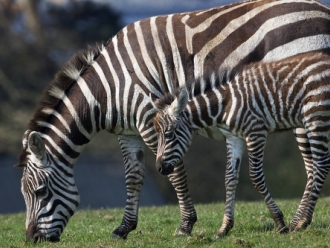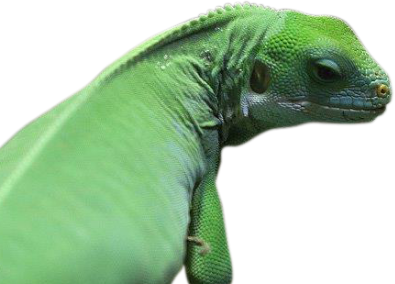Grant’s Zebra
KEY FACTS
-
LATIN NAMEEquus burchelli boehmi
-
BIOMETemperate Grasslands and Deserts
-
CLASSMammal
-
ORDERHerbivores
-
CONSERVATION STATUSLeast Concern
COME AND FIND ME AT..
African Savannah

About the Grant's Zebra
As unique as a human fingerprint, the black and white pattern that covers the body, head and limbs of the Grant’s Zebra makes it one of the most recognisable wild animals in the world. The species is a member of the horse family and has excellent hearing and eyesight. It can reach heights of over 140 cm, generally weighs about 300kg and is capable of running at speeds of 56kph.

Habitat
A social and nomadic animal, the Grant’s Zebra grazes on the grasslands and savannas of sub-saharan Africa.

Wild Notes
Zebras live in family groups of up to 18 individuals in the wild and are lead by one dominant male, which is called a stallion. He will stay at the back of the group to defend mares and foals from danger, and can bite and scratch predators as well as kick. The species actually has a very powerful kick that can cause serious injury to other animals, so lions, hyenas and African wild dogs are very careful about any approach.
Foals are born with brown and white stripes initially and can run with its herd within an hour of being born. However, mothers keep newborns separate from others long enough to allow the foal imprint on its stripes, smell and call.

Conservation
The Grant’s Zebra is the most abundant and widespread of all six of the plains zebra subspecies, but has still seen its numbers in the wild dwindle because of ongoing conflicts in and around its native habitats.

Did You Know?
Zebras and horses have been crossbred to create a zorse, an animal used for trekking in Mount Kenya. Some scientists believe their black and white stripes may help them withstand the intense solar radiation of their native habitat as well as being a form of camouflage that breaks up the outline of their bodies – making them appear indistinct to predators.

The Fota Connection.
The Zebras at Fota are from east and central Africa – the same race that occupies the Serengeti Ecosystem of Tanzania and Kenya. The main stallion is Barney, who was born at Fota back in 1988, and he has fathered a number of offspring to date – including the aptly named Zedward. Part of the African Savannah, the herd mixes well with the Giraffe, Ostrich and Oryx groups.

- Grant's Zebra at Fota Wildlife Park are sponsored by Allen Nutrition.





